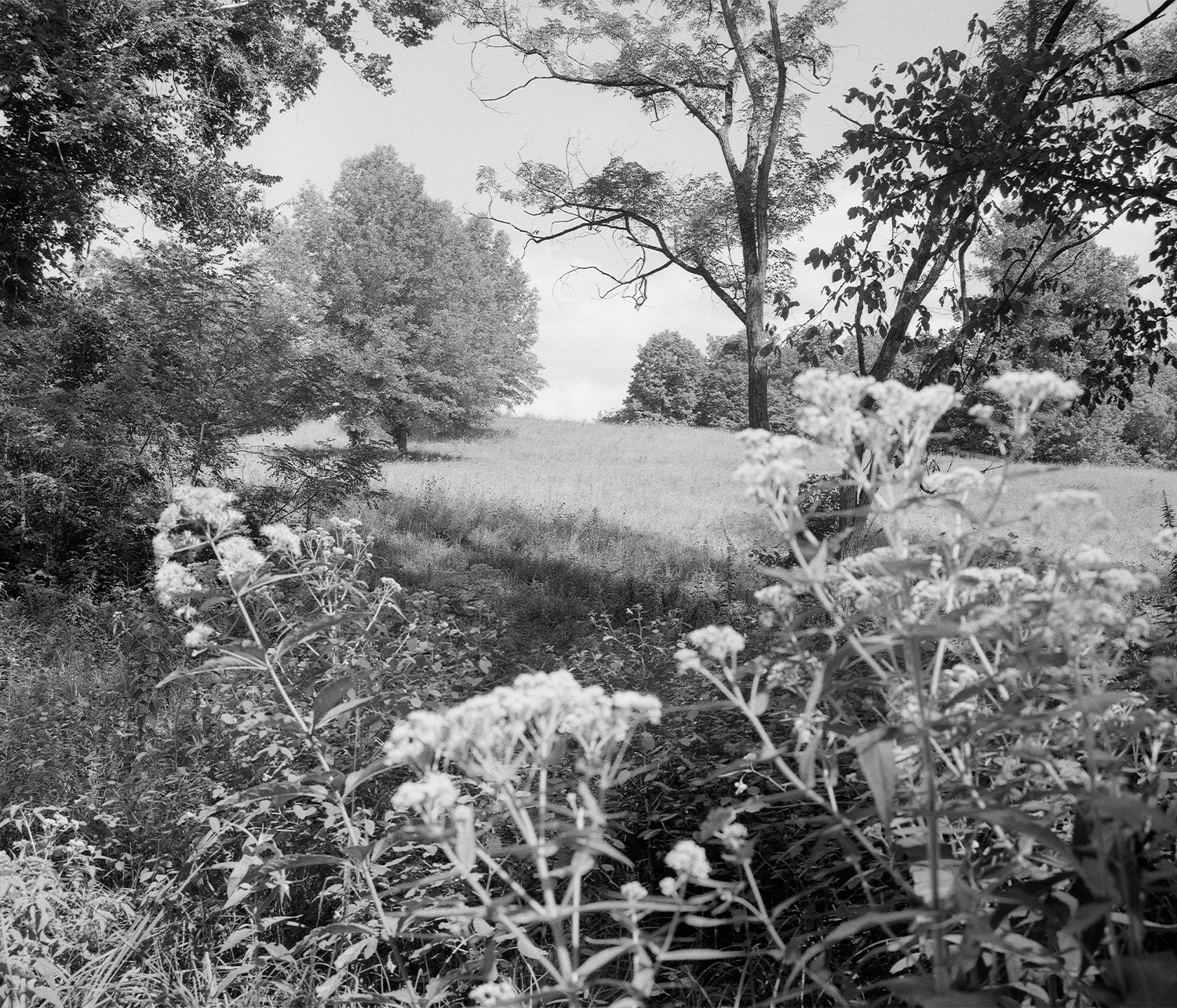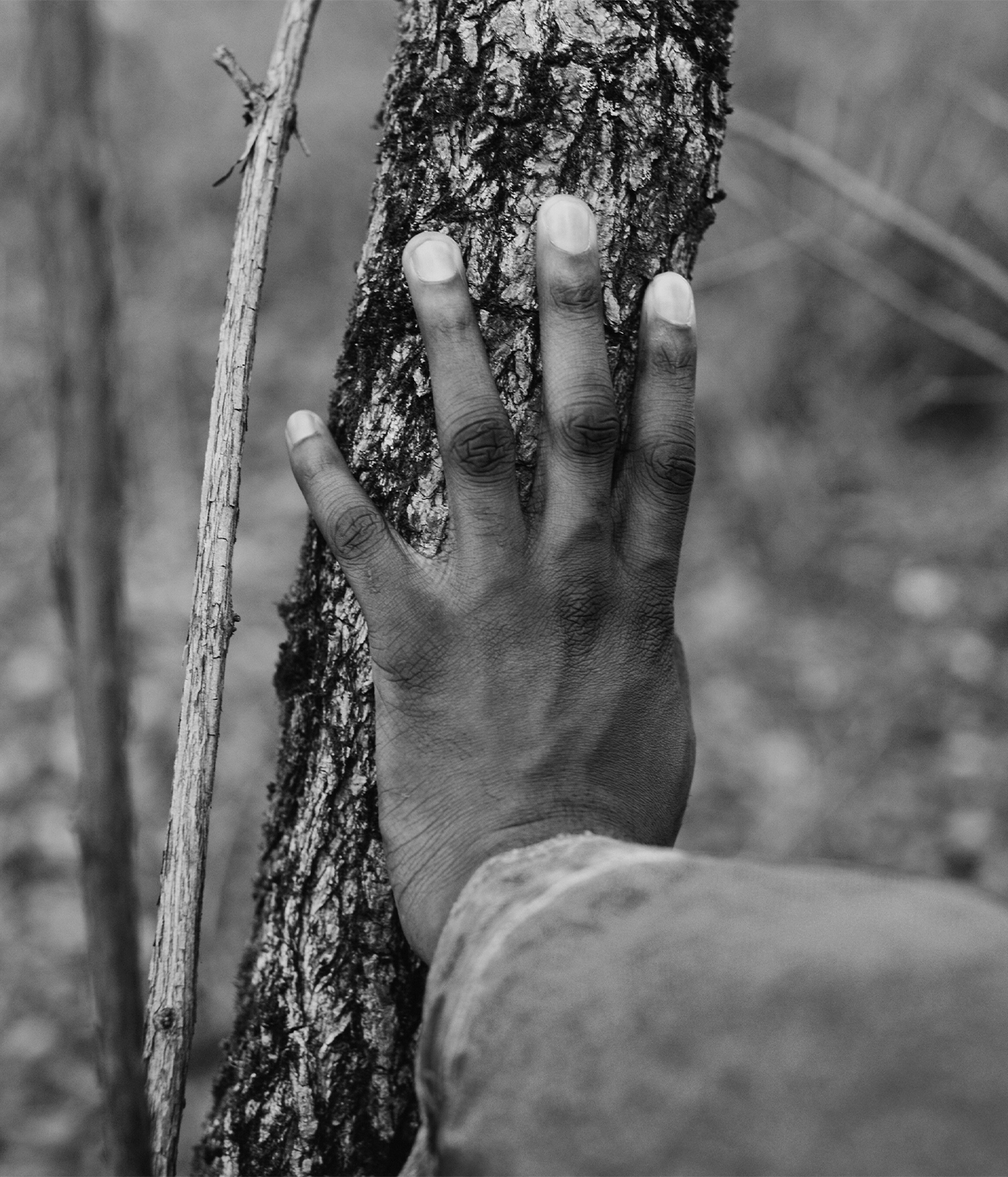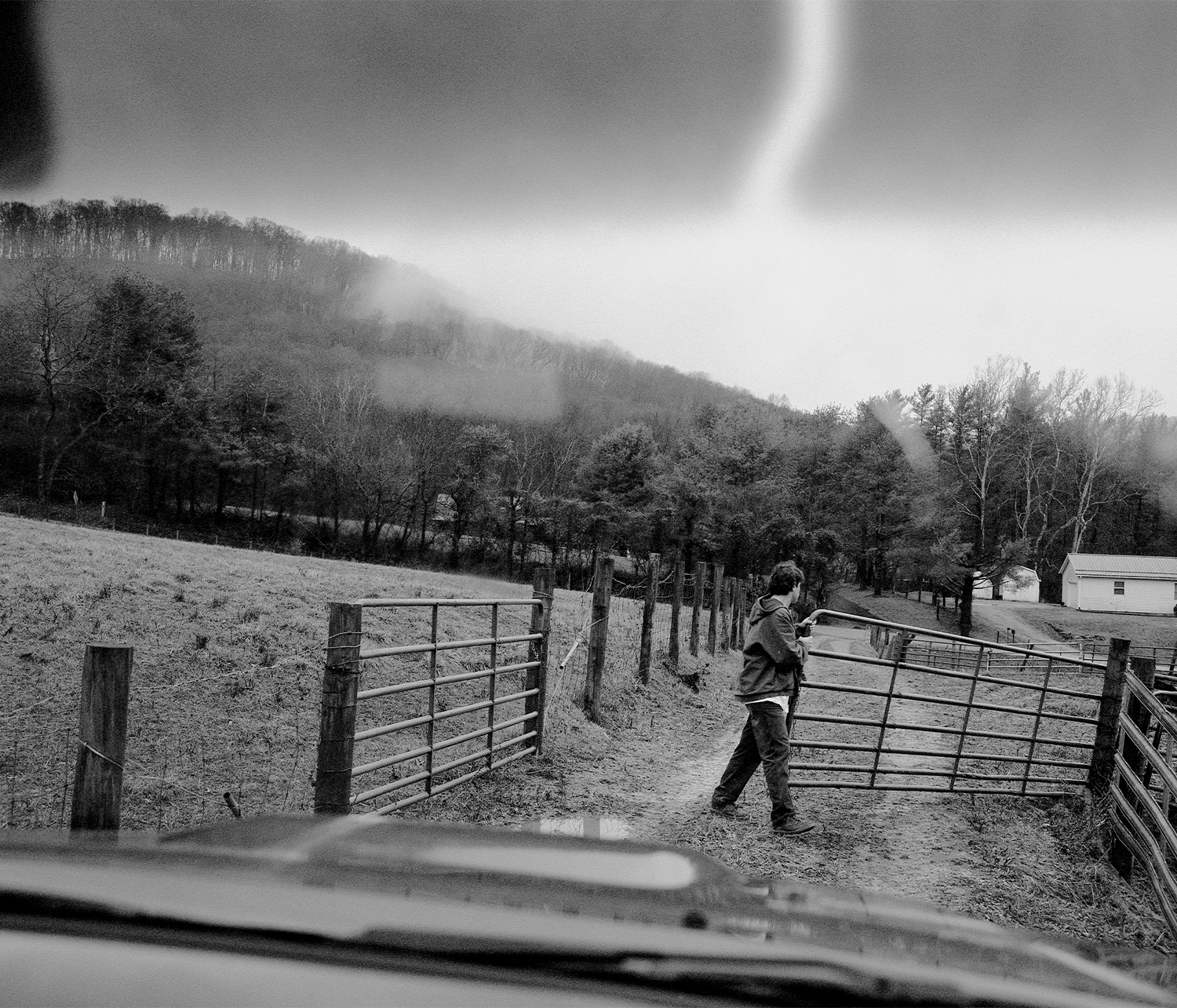
Interview Documentary
Sassafras Ridge
Photographer Josh Chaney documented the southeast outskirts of the Columbus, Ohio area. The result is his latest and first proper (his own words) book 'Sassafras Ridge'. His project is a reflection of thisunique place and his relationship to it. The deep connection to his craft and the landscapes he captures are clearly visible in his work.

- Tell us a little about your background – what path led you to becoming a photographer, and to doing what you’re doing today?
I’ve been a photographer in some capacity for the past ten years. It started in high school with an introductory photo class working with 35mm cameras and a darkroom. Carrying a camera just felt inexplicably right, and it's always been part of my life and how I process and experience it. I started making a lot of photo zines towards the end of high school, printing hundreds of sheets off in my school’s library and selling them on Instagram. Eventually I found photobooks and have been obsessed with them since.


- Can you tell us what the project ‘Sassafras Ridge’ is about?
I grew up in the far southeast outskirts of the Columbus, Ohio area. As a kid, I spent a lot of time outdoors further southeast in the state in the Appalachian foothills and in the Ohio River Valley. Over the years, I began to view this region as a sort of personal refuge. It was the first time in my life where I really learned how to be connected to the landscape. I’ve always been drawn to the contradictory nature of this region, how simultaneously rugged and soft its landscape and its people can be. I learned a lot about myself in this setting as a kid. I used to find sassafras on the side of trails and pull off a twig, snap it open, and smell the sweet bubblegum-ish scent of it. This always felt very grounding and calming to me, and it was the inspiration for the name Sassafras Ridge. It is a made-up name for the region, but it does refer to a very real and tangible place, albeit a more personal and softer, dreamlike version of it. The project is a reflection of the real-world region and geography, as well as my own personal, youthful relationship to it.


- Can you tell us a bit more about your approach for this project?
I had naturally built up a body of photographs from southeastern Ohio from spending lots of time there. The title came very early in the process for me, and it kind of informed the entire approach to the project. I wasn’t sure what Sassafras Ridge would eventually look like and be, but I knew from the beginning how it should feel emotionally. My approach to making this project was essentially spending days wandering aimlessly in my car down 33 or along the Ohio River and making photographs that felt right. For years, any off day I could find, I would happily leave home and drive around the state making photographs all day. It was a lot of aimless wandering and a lot of revisiting and reconnecting to very specific places from my childhood. The first few years I made this body of work with a Mamiya RB67, and the later years I used a Pentax 67. Everything was made with 6x7 film, many thousands of miles on my Subaru Impreza, and home processing in my kitchen sink.


- Can you tell us a bit about the process of book making? What were your biggest challenges in the book publishing process?
Sassafras Ridge was my first time making a proper book, and I had to learn everything as I went. I decided years ago in 2019 or so that I really wanted to make a photobook and would do whatever it takes to bring it into the world. The process of building this body of work was incredibly rewarding and beautiful for me. I loved spending so much dedicated energy and time making photographs in the foothills of southeast Ohio on the edge of Appalachia. Having a project you care a lot about and being able to work hard on it for years brings a lot of purpose and energy to your life. The most challenging parts of the book making process for me were all towards the end, after the years of making photographs and constantly playing with edits and sequences. Designing the book, finding a printer, figuring out all of the technical details with materials and file preparation, and the finances were all very challenging to figure out. There are a lot of things I will do differently going forward, but I was able to bring Sassafras Ridge to life and achieve the goal I set out 5 or so years ago. At the end of the day, I’m proud of it. Self-publishing can be super demanding, but it is also very fulfilling to pack and ship book orders from my own home.

- What does photography mean to you?
For me, photography is a fact of life. I can’t imagine it not being part of me at this point. Photography is something that has deeply grounded me for a long time now. Having a camera and feeling compelled to just be out in the world, just to be there anywhere standing in it, is such a powerfully connective force for me. It didn’t feel like this right away starting out with photography, but consistently spending dedicated time to just be present and look at the world in awe, exactly how it is, makes you love life and love the world. For me, photography is the tool that helps me connect to the world and to myself. It's a way of survival and meaning-making, connecting to place.


- Which other photographers, artists or creative people are you loving at the moment?
I’m always returning to Rahim Fortune’s books for inspiration. I’m especially a fan of how he’s able to mix personal, historical, geographic, and universal themes all into single bodies of work. Sometimes my brain gets so overwhelmed with all the possible directions and things I feel drawn towards, and his work is an amazing example of how all these things inside may be just one thing. I’ve also been feeling deeply inspired by Rinko Kawauchi’s work lately. There’s something so alluring and magical about her photographic voice, and I admire her affection for daily life. I value ritual a lot in my photography, returning to many of the same places over and over for years to see minute changes. I make my best work when I feel comfortable and safe, and habitually returning to places helps create this for me. I feel that sense of calm attention that comes from ritual in her bodies of work, and it inspires me. I’m also always returning to J.J Berg’s work in Northern Kentucky. I greatly admire his photographs, and there’s a quality to them that I cannot put into words. That’s why I love looking at them.


© Pictures by
Josh Chaney
